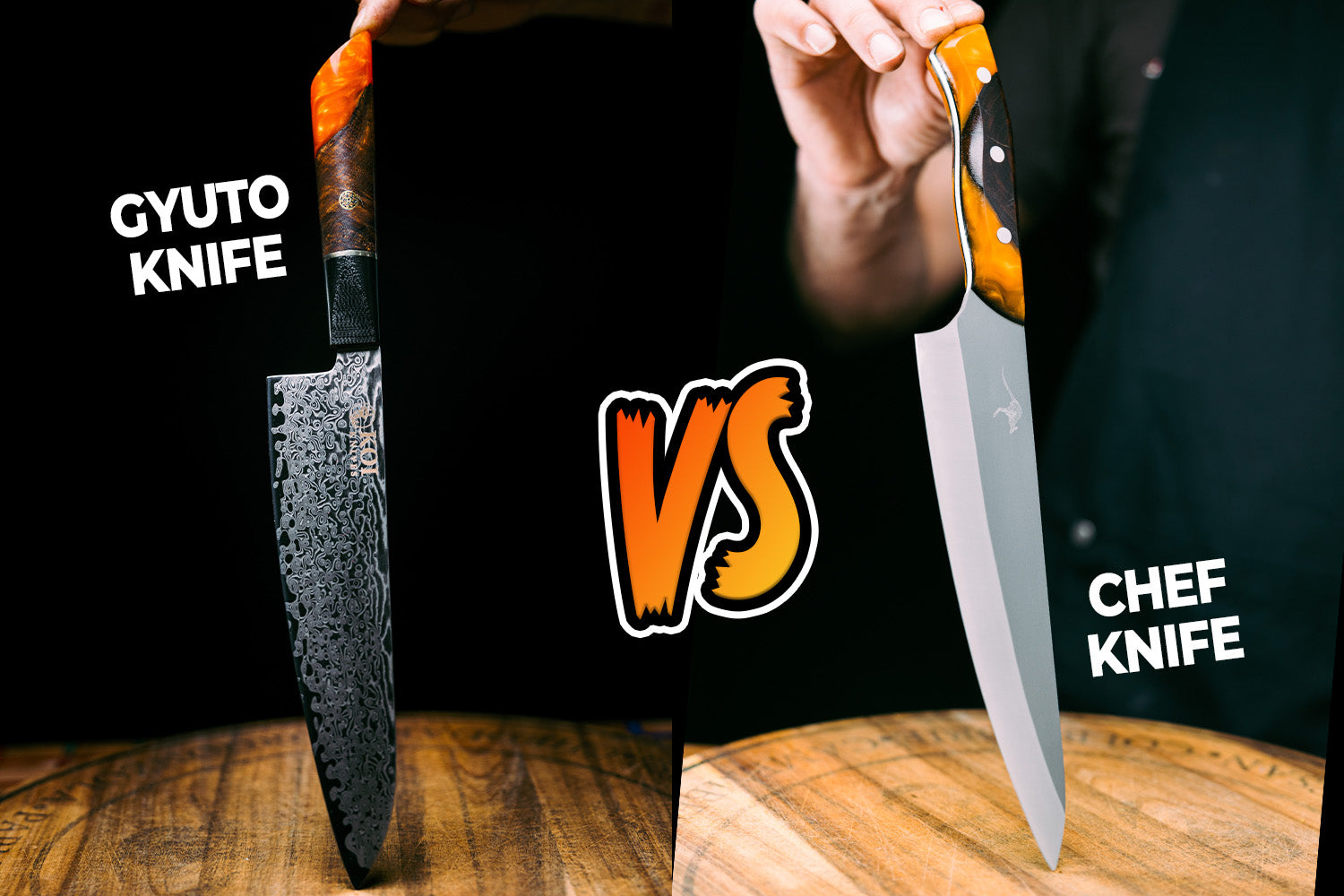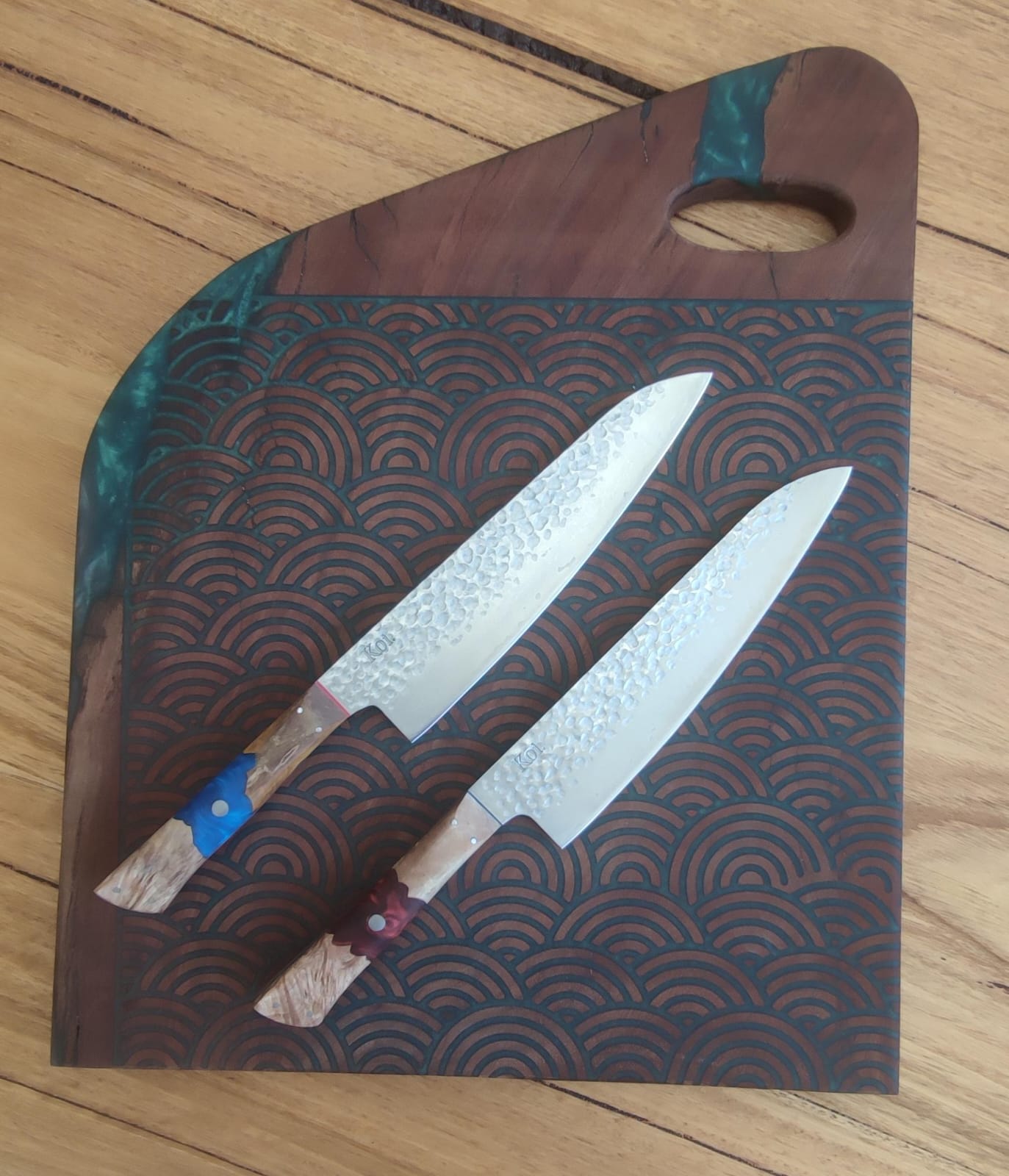We will compare and contrast the two types of knives so that you can make an informed decision about which one is the perfect fit for you.
What is a Gyuto Knife?
A Gyuto knife is a Japanese chef's knife that is used for a variety of tasks, such as slicing, dicing, and mincing. The Gyuto knife is typically between 210mm and 270mm in length, and its blades are usually made from carbon steel or stainless steel.
The most important feature of the Gyuto knife is its sharpness; the blade is ground to a very fine edge, which makes it ideal for precision cutting. Gyuto knives are also known for their versatility; they can be used for both Western-style cooking and traditional Japanese cuisine.

What is a Chef Knife?
A chef knife is a kind of kitchen knife that is designed for general-purpose chopping and slicing. It typically has a wide, curved blade that tapers to a point, making it ideal for cutting through tough meats and vegetables. The knife also usually has a bolster, which is a thickness of metal near the base that provides extra strength and stability.
In addition to its versatility, a chef knife is also prized for its comfort and durability. The broad blade gives the user more control over their cuts, while the bolster helps to protect the hand from fatigue. As a result, a chef knife is essential in any kitchen.

What are the Differences Between a Gyuto Knife and Chef Knife?
Now that we've gone over the basics of each type of knife let's compare and contrast them.
The size of the knives
The most apparent difference between a Gyuto knife and a chef knife is their size.
Gyuto knives tend to be larger, with blades that range from 210mm to 270mm. This makes them a better option for tasks that require more precision, such as slicing and dicing.
On the other hand, Chef knives typically have shorter blades that are range between 180mm and 210mm. This makes them better suited for general-purpose chopping and slicing.
The shape of the blade
Another difference between the two types of knives is the shape of their blades.
Gyuto knives have a flatter blade, while chef knives have a curved blade that tapers to a point. The straight blade of the Gyuto knife makes it easier to push/pull method when cutting, which is ideal for slicing.
The curved blade of the chef knife, on the other hand, provides more control with a finer tip that helps in rock chopping and roll-cutting.
Tip of the knife
The tip of the Chef knife is more pointed than the tip of the Gyuto knife. This allows for more precision when cutting, but it can also make the chef's knife more difficult to control.
The Gyuto knife has a more blunt tip, which makes it easier to control and less like to puncture ingredients at the top of your chopping board.
The handle
Gyuto knives typically have a wooden handle with hidden tang construction, while chef knives usually have a wooden or composite handle with full tang construction. The type of handle you want to choose is a matter of personal preference.
See our blog on types of handles here.
However, some people find that wooden handles are more comfortable to hold, while others prefer the extra weight and stability of a full tang handle.

Cost
Gyuto knives are typically more expensive than chef knives. This is because they are often made with higher-quality materials and construction, and they require more time and skill to make.
If you are longing for a high-quality knife that will last a long time, then a Gyuto knife is a good option. However, if you have a fixed budget, then a chef knife is a better choice.
Weight
Gyuto knives are also typically lighter than chef knives. This is because they have thinner blades and lighter construction, which makes them lightweight and nimble.
However, chef knives with a full tang handle tend to be heavier than Gyuto knives.
If you are longing for a knife that is easy to control and manoeuvre, then a chef knife is a better option. However, if you want a knife that is built to last, then a Gyuto knife is a better choice.
Grip offered
The way you hold a Gyuto knife is different from the way you hold a chef knife. Because of the make of the blade, you will typically grip a Gyuto knife near the base of the blade. This provides more control when cutting.
On the other hand, with a chef knife, you can hold it by the handle or with the index finger and thumb gripping the blade and the rest of the hand gripping the handle. This makes it more versatile and gives a fine cut to the chopped veggies.
Sharpening the knives
Gyuto knives are made with harder steel, which means they can hold an edge for longer. However, this also makes them more difficult to sharpen.
Chef knives are made with softer steel, which makes them easier to sharpen but means they will need to be sharpened more often.
The Finishing of the knives
Gyuto knives' finishing has a more polished finish than chef knives. This is because they are made with higher-quality materials and construction, and they require more time and skill to make.
On the other hand, chef knives have a more rustic finish. This is because they are made with less expensive materials and construction, and they require less time and skill to produce.
Parting Words
Both Gyuto and chef knives have their own unique advantages and disadvantages. The best option for you will vary depending on your personal preferences and needs. If you're longing for a versatile knife that can be used for both Western-style cooking and traditional Japanese cuisine, then the Gyuto knife is a great option.
However, if you're looking for a general-purpose chopping and slicing knife, the chef knife is better. Whichever knife you choose, make sure to invest in a quality blade that will last for years to come.




